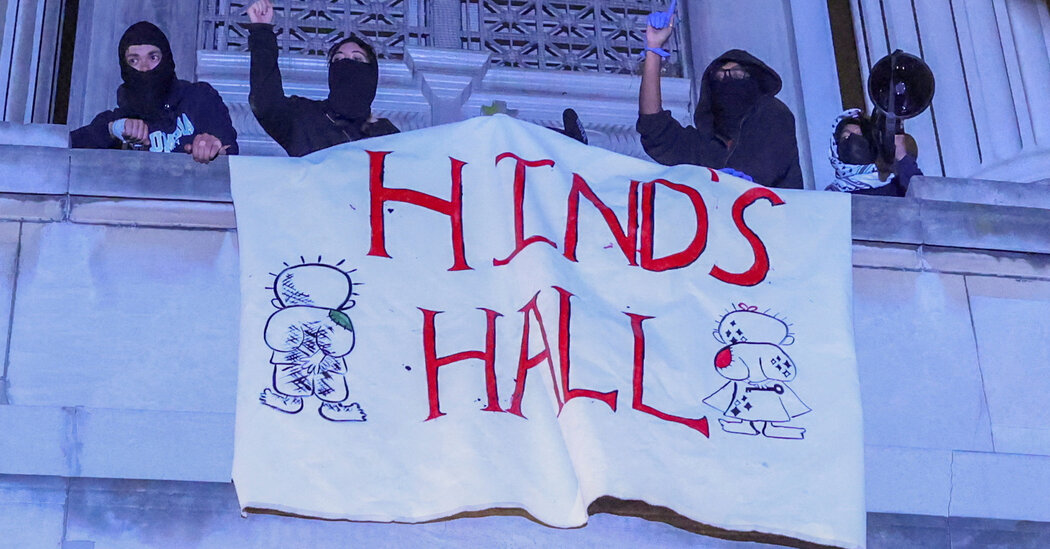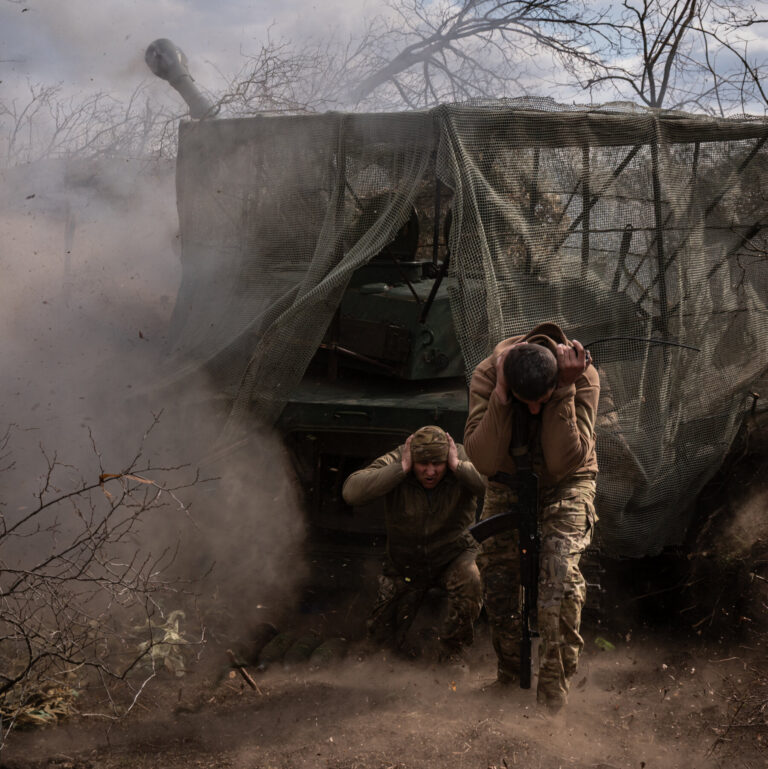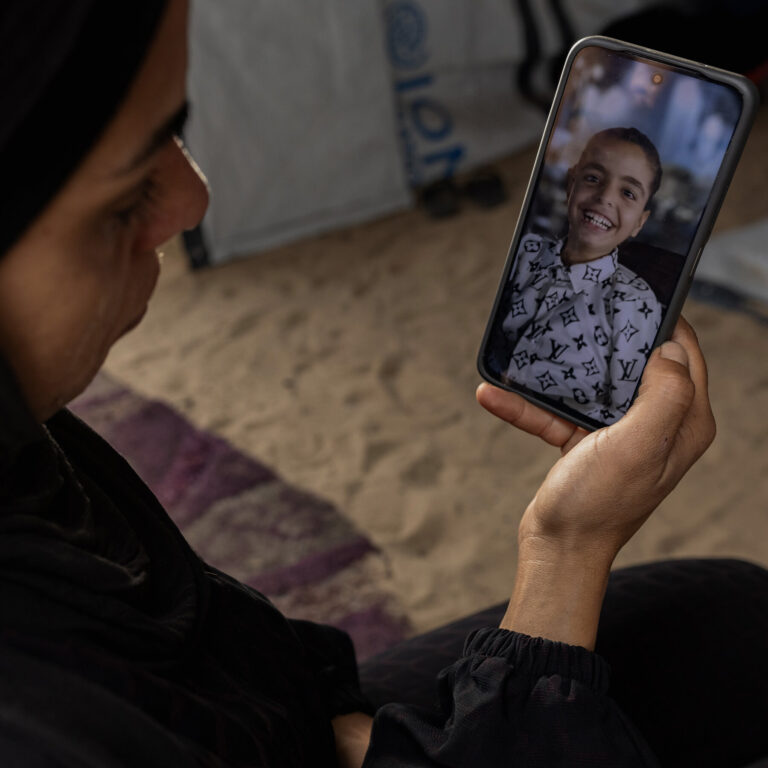When pro-Palestinian student protesters took over Columbia University's Hamilton Hall last month and renamed it “Hind's Hall,” the banner they unfurled featured images of a cartoon character created over 50 years ago who symbolizes the resilience of the Palestinians.
On either side of the text were two images of a barefoot boy with tattered clothes and spiky hair, his back to us.
The character is called Handala (variously transliterated as Hanzala or Handzala), a name derived from a native plant that is deeply rooted, persistent, and bears bitter fruit, and has become a powerful symbol of the Palestinian struggle. The image was created in 1969 by Palestinian political cartoonist Naji Al-Ali, one of the most read cartoonists in the Arab world, who was murdered in London in 1987. (The case remains unsolved.)
Handala is 10 years old, the same age Ali was when he became a refugee in 1948.
After the 1973 Arab-Israeli War, also known as the Yom Kippur War, Ali depicted Handala exclusively with his back turned, a gesture that transformed him into a silent witness to the horrors and outrages happening around him. The stance, according to the cartoonist, represented a rejection of the political machinations of foreign nations when it came to the fate of ordinary Palestinians.
Margaret Olin, a religious studies scholar at Yale Divinity School and co-author of “The Bitter Landscapes of Palestine,” has photographed Handala's appearance in murals and graffiti during her visits to the Gaza Strip and West Bank over the past decade . . “The return to their homes has become the symbol of the entire Palestinian movement,” she said in a telephone interview.
Handala, he explained, “has the resonance of Paul Klee's “Angelus Novus,” which Walter Benjamin described as the angel of history. “He is facing the ravages of time and disaster, but he has turned so that you too can see the disaster.” He added that the character “also has a shade of Günter Grass's Oskar in 'The Tin Drum,' a child who refused to grow up as Germany's disasters unfolded around him. He is the child witness, the child who is stuck bearing witness, just waiting for the disasters to pass.”
The figure of Handala, he noted, is “plastered on homes in East Jerusalem, where residents are being forced out by illegal settlements. He was involved in the protests. He's everywhere.”
The image appeared in the United States: “My son's in-laws are Iraqi and they have a sticker on the bumper of their car,” Olin added. “One of the reasons the character is so ubiquitous is that Ali made him very easy to draw.” He said children in West Bank refugee camps drew smiling faces on the back of Handala's head when they encountered him in murals, turning his suffering into joy.
Ali was known to be an equal opportunity critic, as he likely took aim at the failure of Arab countries in the region to support Palestinians such as Israel and the United States. At times he also targeted the Palestine Liberation Organization in his images of Handala.
Peace activists in Israel have also adopted the figure of Handala over the years, showing him hugging another cartoon boy: Srulik, created by Israeli cartoonist Kariel Gardosh, who has become the embodiment of Israel. But Handala is not common there. Nizan Shaked, a professor of cultural studies at California State University, Long Beach, grew up in Haifa, Israel. He said in an email interview that he only met the character in 1998, when she moved to the United States
The character has been re-embraced by activists and artists over the past seven months. The Freedom Flotilla Coalition, a grassroots solidarity movement working “to end Israel's illegal blockade of Gaza,” according to its website, has christened one of its ships the Handala. A publishing house in Italy and a group of artists in Japan created posters in which the character was reinterpreted in the present day.
And Handala also arrived in Venice, in a solo exhibition not affiliated with the Biennale. At the Roberto Ferruzzi Gallery in Dorsoduro, the paintings of the Palestinian artist Malak Mattar are on display until June 14th. The exhibition presents “No Words” (2024), which the artist describes on Instagram as “the largest documentation of the ongoing genocide in Gaza. ” The canvas, the largest he ever made, more than 16 by 7 feet tall, is an homage to Palestinian mural culture. Handala appears at the top of the painting, looking at a wall. Unlike Mattar's earlier paintings, which are intensely coloured, this work is rendered in dark grey, black, white and brown.
Mattar, born and raised in Gaza City, lived there until Oct. 5, when she left to pursue a master's degree in London, she said in a telephone interview. Her painting focuses on the people who were forced to evacuate to escape the Israeli military bombing of Gaza, where she, she said, many of her friends, family and colleagues were killed.
“When I was much younger as an artist, Handala was very significant in my work,” Mattar said. “Growing up in Gaza, he was a very emotional symbol: he is a boy we all relate to, he is a boy who speaks for all of us and our feelings.”
“He is a child who has been displaced, who the whole world has failed.”
Last month, Hadi Eldebek, a Lebanese American musician and educator and member of the Silkroad Ensemble, worked with his Brooklyn Nomads collaborators to create a multimedia concert at Roulette in Brooklyn dedicated to Naji Al-Ali and his ubiquitous resistance persona. Musicians and dancers performed while animations of Ali's cartoons were projected above them. “For me – as a Lebanese, as an Arab, as a Muslim, as a human being – Hanzala represents me,” Eldebek said.
What seems to unite the artists who are re-embracing Handala is the sense of its enduring relevance.
“Some audience members at the show asked me if we had commissioned a contemporary cartoonist to make the images we showed, since they seemed to represent all the horrors we have seen on the news since October 7,” Eldebek said. “But they are images made in the 1970s and 1980s, when Ali was already looking back on decades of suffering.”





